Hue Historic Citadel
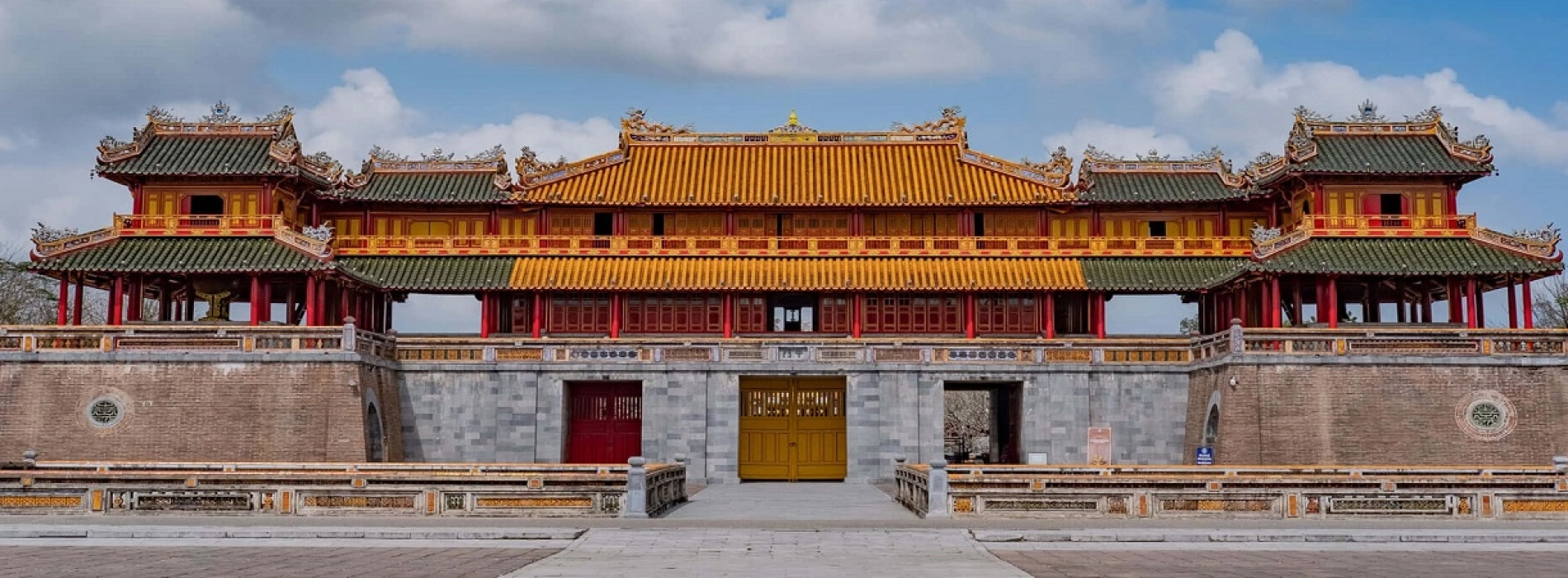
Hue Historic Citadel is the most attractive destination in the last ancient citadel. When tourists come here, they admire ancient architecture and have an opportunity to learn more about the history of a place where the feudal power once flourished. Explore the mysteries behind the walls with Asia King Travel!
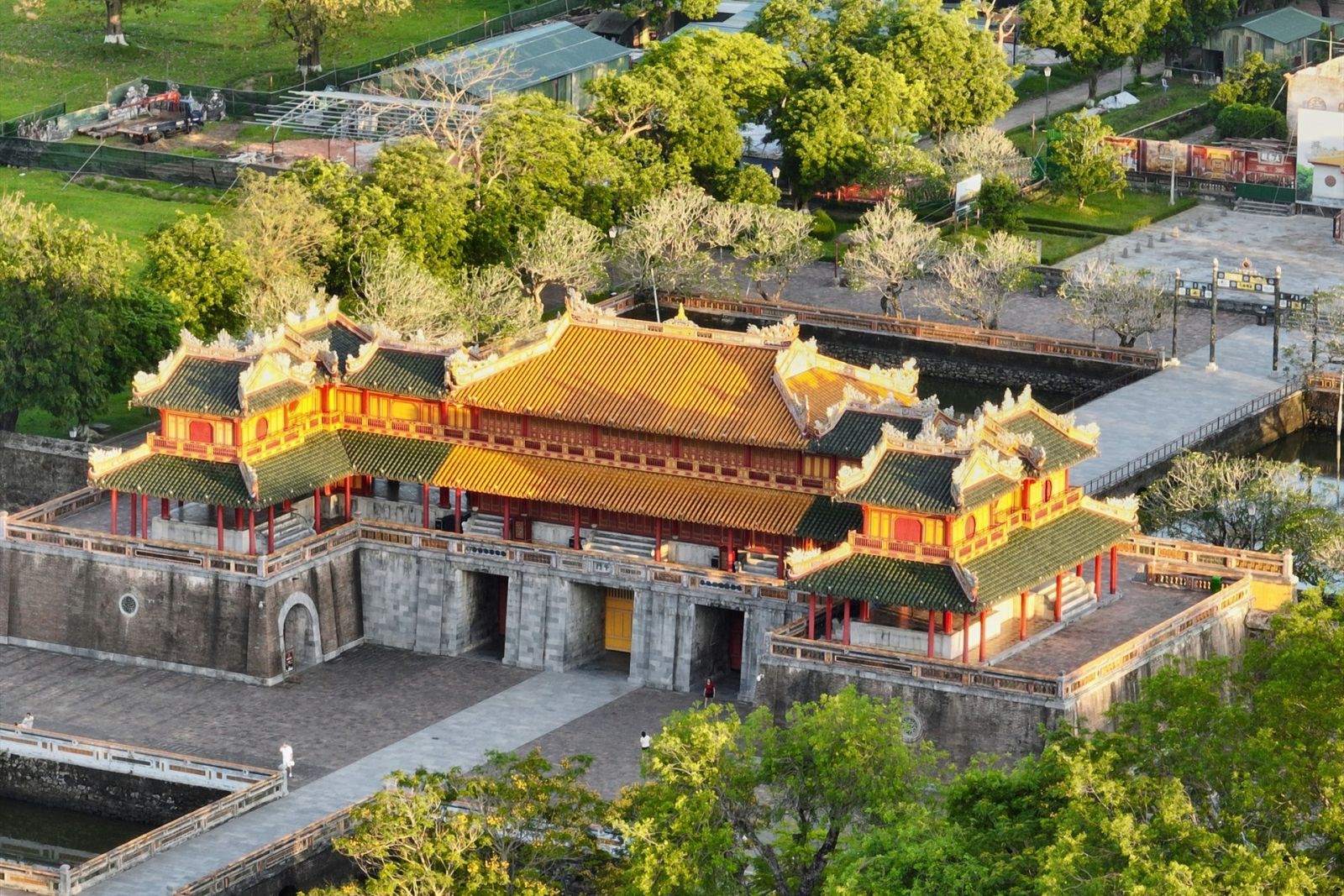
Come to Hue Historic Citadel to explore an ancient beauty. Source: Bao Lao Dong
Hue Historic Citadel is located on the northern bank of the Huong River. This is an antiquated citadel, a part of the Hue Monuments Complex in the center of Hue City, and its area is 520 ha. This place has nearly square ground, the front is slightly curved like a bow because it follows the flow of the Huong River.
The perimeter of the citadel is more than 10 km wide, built according to the rampant architecture of Vauban-France (a military defense structure with 24 forts protruding outside) combined with the principal structures of the East.
The Imperial City was the outermost wall surrounding the entire political, cultural, and administrative center of the Nguyen Dynasty. Its main function was to protect important areas such as the Imperial Citadel and the Forbidden Purple City, and it was also the settlement of the mandarins. The walls were constructed solidly with a defensive moat, gates, and forts system.
The Imperial Citadel is within the Imperial City and it was built to protect the most crucial structures of the royal court. This is where the royal ceremonies took place, and it was also the power center of the Nguyen Dynasty with many significant administrative agencies. The Citadel has many palaces, temples, and shrines creating a majestic and sacred space.
The Forbidden City is the innermost wall, which was reserved for the emperors and their royal family. This was the workplace of the emperor and where the most private activities took place. The Forbidden City shows the image of an isolated space symbolizing the majesty and power of the feudal monarchy with a system of palaces and gardens.
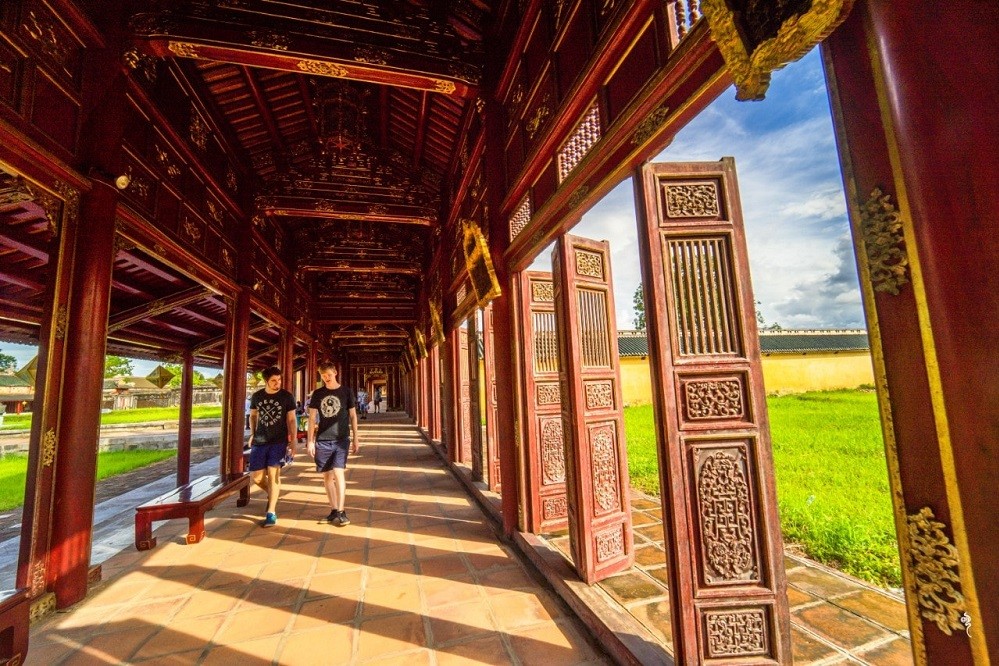
A hall of the structure of The Forbidden Purple City. Source: Kham pha Hue
Hue Historic Citadel is located in the city center of Hue. To get to this place, you can start from the south bank of the Huong River and go across Trang Tien Bridge or Phu Xuan Bridge. Then, visitors go along Quang Duc Street to reach the Citadel.
Travelers can choose many vehicles such as cyclos, bikes, motorbikes, or taxis to get there without wasting much time.
You may like: Hue Tour 1-Day: Discover The Imperal City of Hue
Hue Historic Citadel is a large architectural work of the Nguyen Dynasty, which began construction in 1805 under the time of Emperor Gia Long. The survey and planning process started in 1803 with the direct guidance of the emperor and his mandarins. The construction was accomplished under Emperor Minh Mang in 1832. The Citadel is a symbol of the power and prosperity of the Nguyen Dynasty.
Hue Citadel is not only an architectural work but also an imperative historical relic that witnessed many changes in the country. From the time Emperor Gia Long chose this location until Emperor Bao Dai abdicated in 1945, the Citadel has undergone 143 years as the capital of the Nguyen Dynasty.
After two centuries of being destroyed by time and war, the Citadel no longer retains its original state. Currently, there are only a few palaces inside the Imperial City in good condition and the relic management board is trying to rebuild the damaged structures.
Every season of the year is suitable for visiting Hue Historic Citadel. However, the ideal time is from April to June. At this time, there are Hue Festivals with many cultural activities like water puppetry, Hue songs… Moreover, if you plan to visit the Citadel, you should come here in the early morning or the early afternoon to enjoy the relaxing air and wander around all the architectural works.
Ngo Mon Gate is the main southern gate of the Imperial City, a huge and sophisticated architectural work - a symbol of Hue Historic Citadel. It was built in 1833 under the time of Emperor Minh Mang, it is not only an entrance gate but also an important ceremonial platform of the royal court. Tourists can watch the reenactment of the guard changing ceremony at the gate.
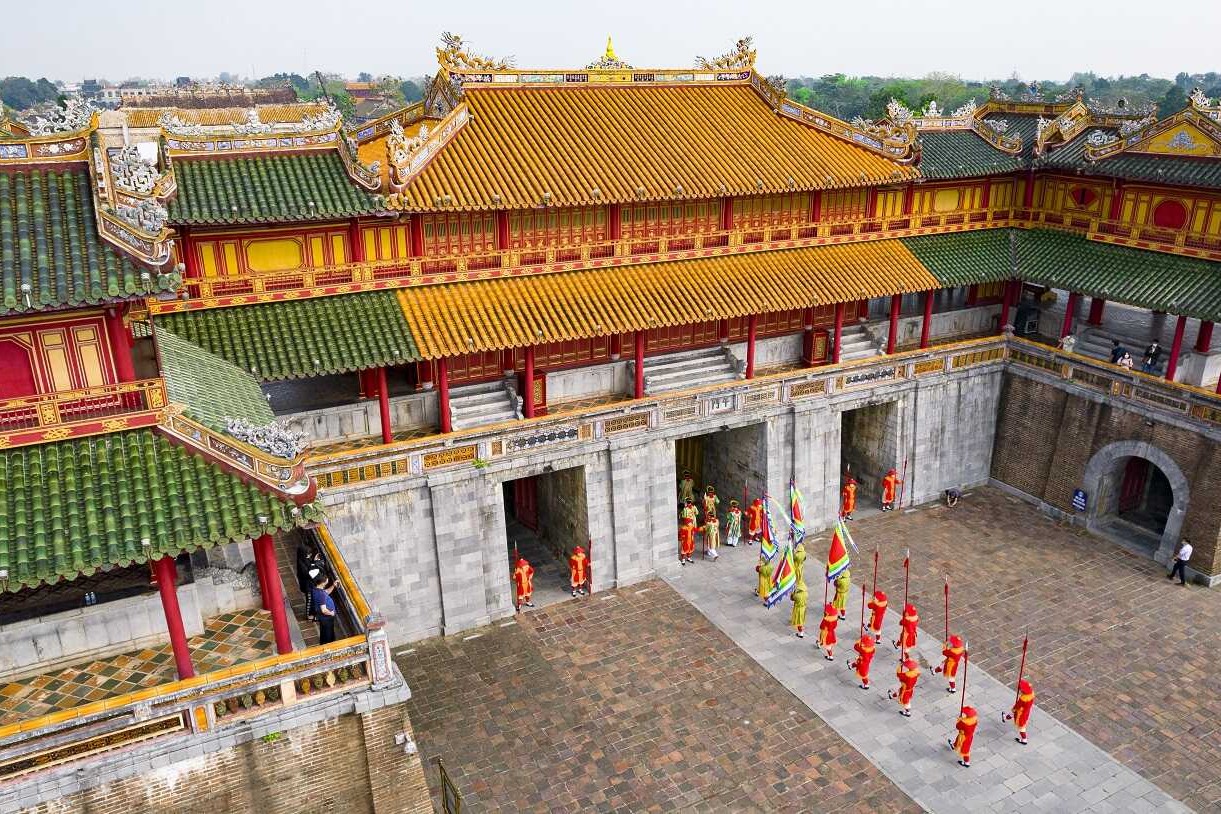
The reenactment of the guard changing ceremony at Ngo Mon Gate. Source: VinWonders
Hue Imperial Citadel is considered one of the largest historical architectural works in Vietnam and this place is also where the Nguyen emperors and their royal families lived. It is seen as a protective armor covering important palaces and temples inside of the Nguyen Dynasty.
In this day and age, the Imperial Citadel welcomes a wide range of travelers to visit and admire
.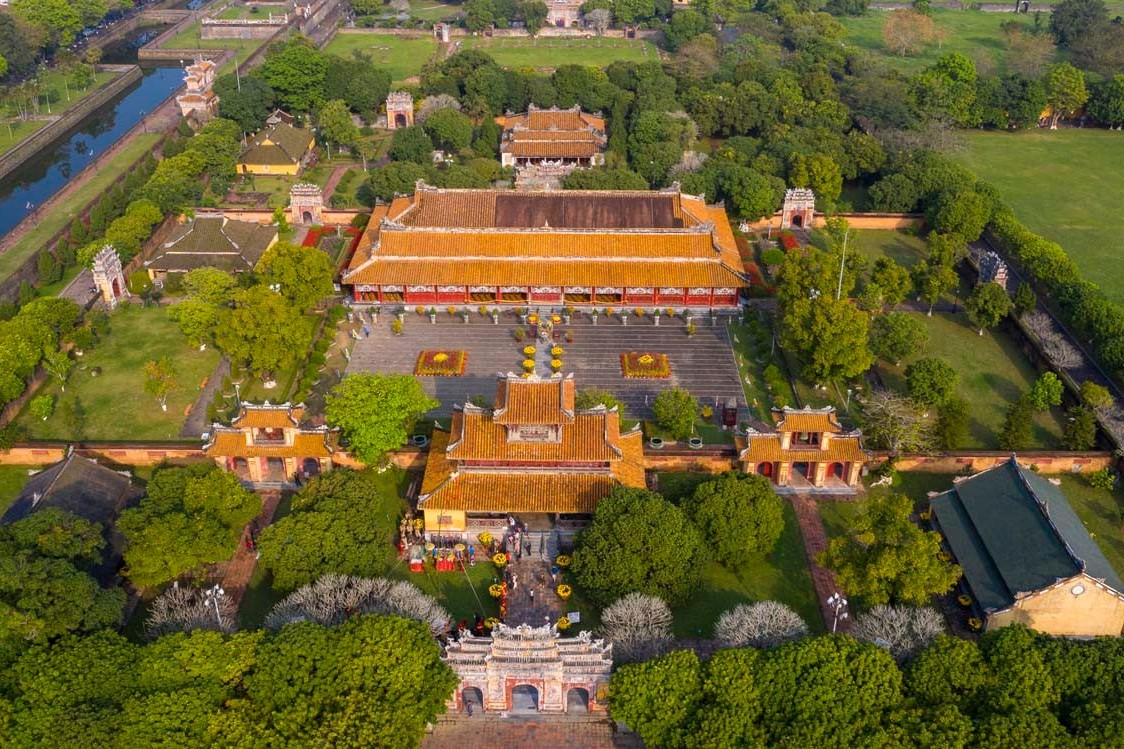
The Imperial Citadel from above. Source: VinWonders
Thai Hoa Palace is located inside the Imperial Citadel - the power center of the Nguyen Dynasty. It was first built in 1805 under Emperor Gia Long. In 1833, the Palace was relocated and rebuilt under Emperor Minh Mang. This place is where special ceremonies and meetings of emperors, royal relatives, and mandarins of the Nguyen Dynasty were usually organized.
This Palace is one of the most beautiful structures in the Imperial Citadel, many tourists are impressed by the majesty and splendor when they visit Thai Hoa Palace.
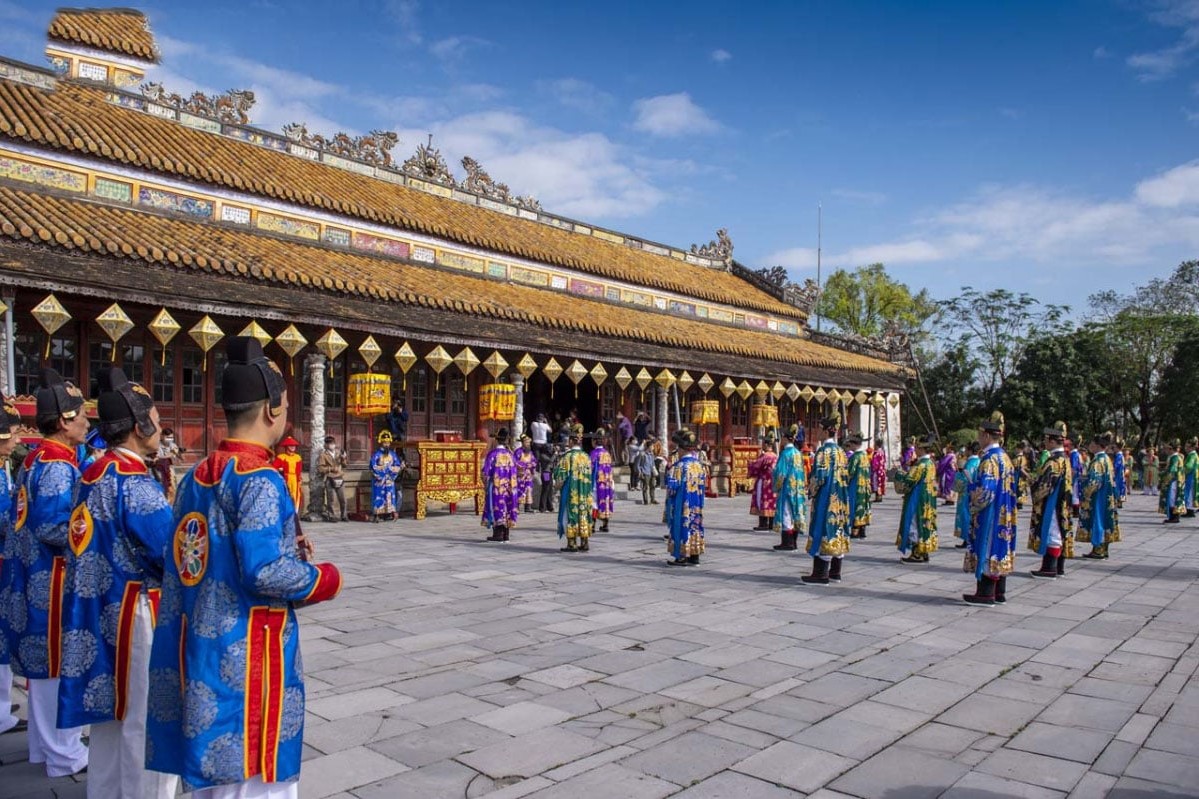
The court ceremony is reenacted at Thai Hoa Palace. Source: VinWonders
This Palace is located in the west of the Imperial Citadel, which was the place where the Queen Mother lived in the past. This place is not only a private living space but also a historical witness of the Nguyen Dynasty, preserving stories about the emperor’s mother. For the time being, tourists often visit here to reminisce about the royal lifestyle.
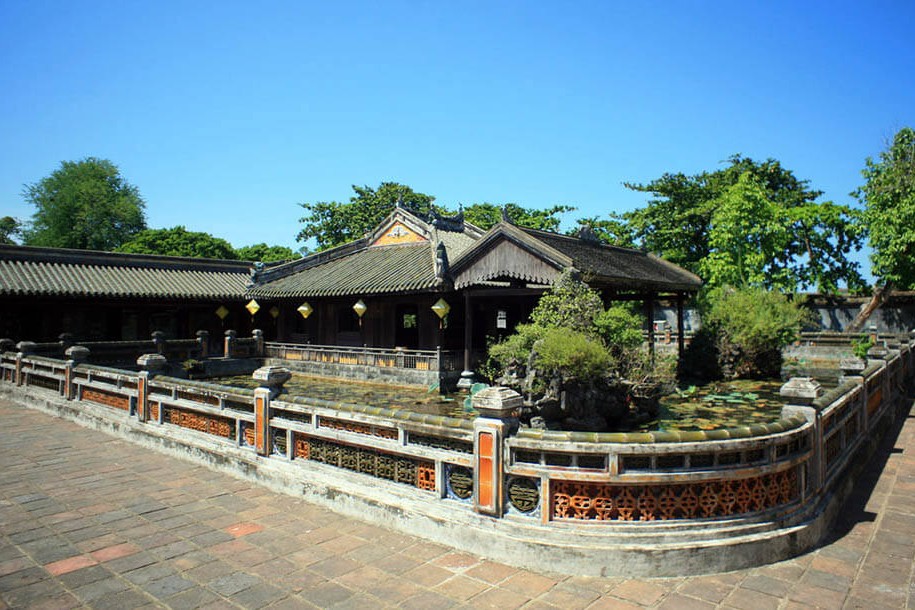
A corner of Dien Tho Palace. Source: Co do Hue
At first, this place was a flower garden where the Nguyen Emperors invited their Queen Mother to visit. Later, it was rebuilt to become a palace where Queen Mother could live and rest. Truong Sanh Palace was constructed in 1821 (the first year ruling of Emperor Minh Mang) in the northwest of the Imperial Citadel.
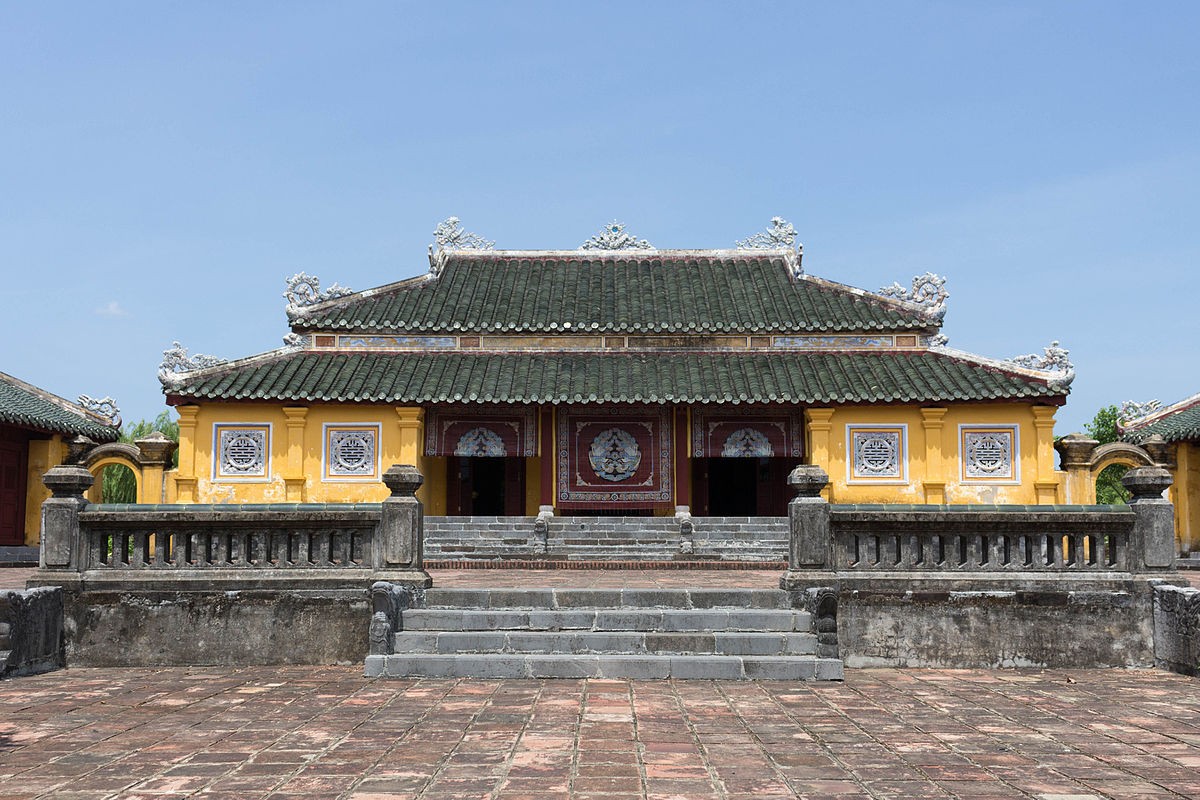
The main site of Truong Sanh Palace. Source: Wikipedia
It is located in the southwest of the Imperial Citadel, a temple that worships the Nguyen Emperors. This place is also where the royal court worships the former emperors. In contrast, the royal concubines, including the Queen are forbidden from attending this ceremony.
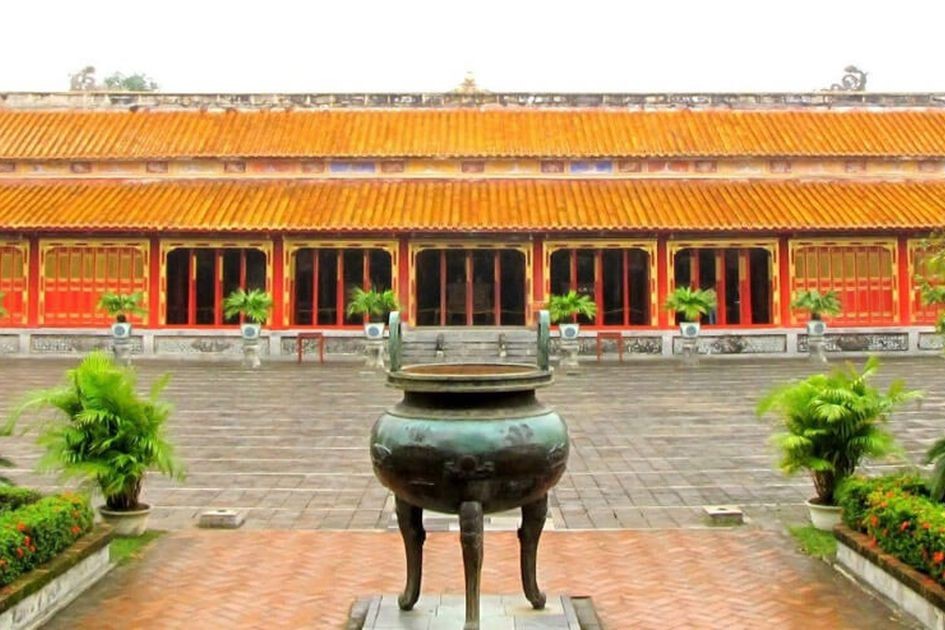
The front of The To Temple which the Nguyen former emperors. Source: Du lich Hue
This Temple is located in front of Dien Tho Palace and to the west of the Imperial Citadel. Phung Tien Temple was built by Emperor Gia Long and Minh Mang to worship the former emperors. Unlike The To Temple, the royal concubines can come here. In addition, this temple holds many treasures from the Nguyen Dynasty.
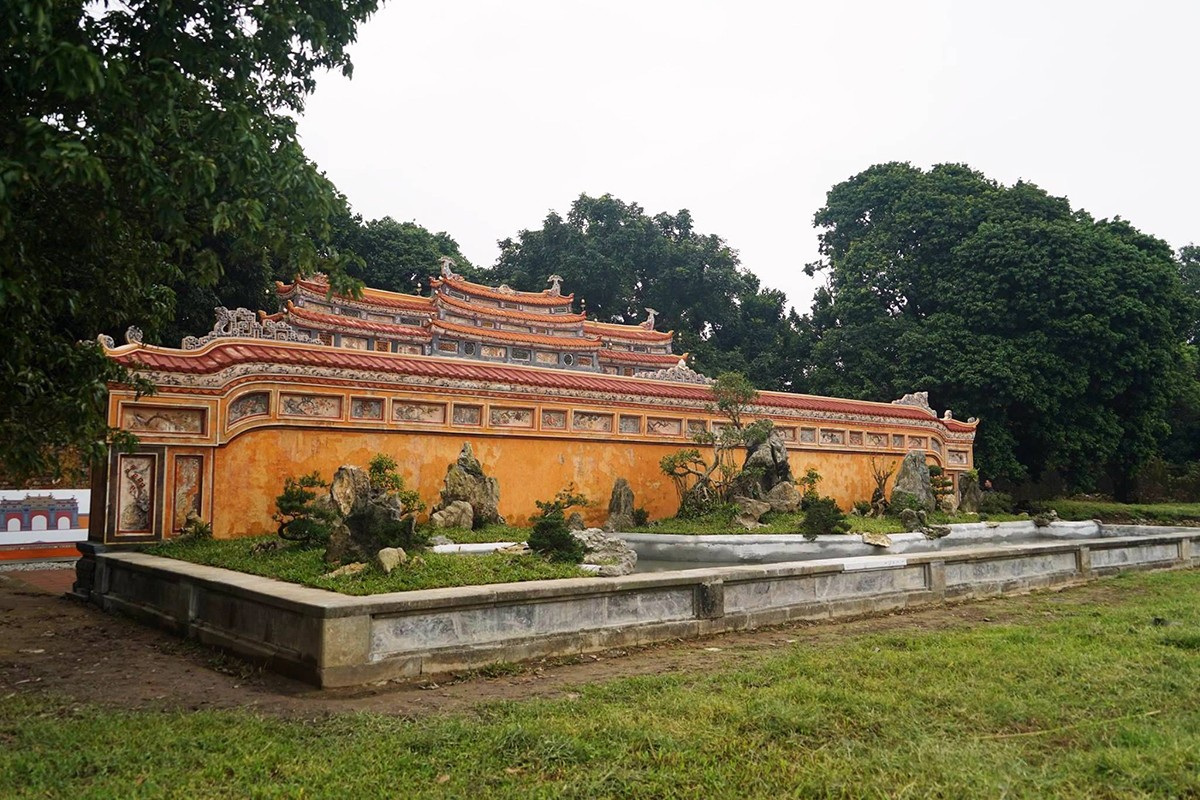
A corner of Phung Tien Palace is rebuilt. Source: Kienviet.net
Hue Historic Citadel is not only a relic but also a living museum of Vietnamese history and culture. Come to admire the timeless beauty and feel the sacred soul of the ancient capital with Asia King Travel!
You may like: Hue Trip Full-day: Royal Tombs Exploration